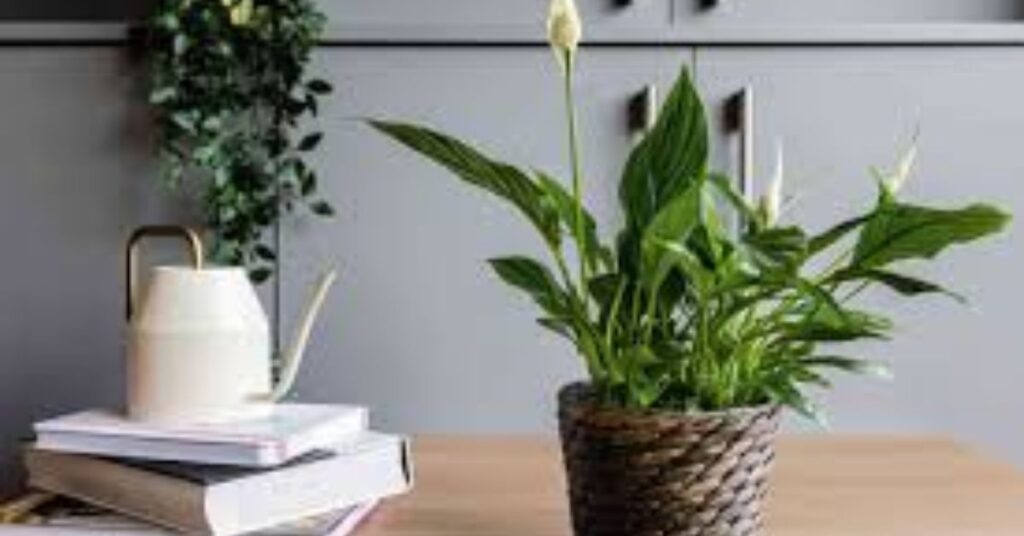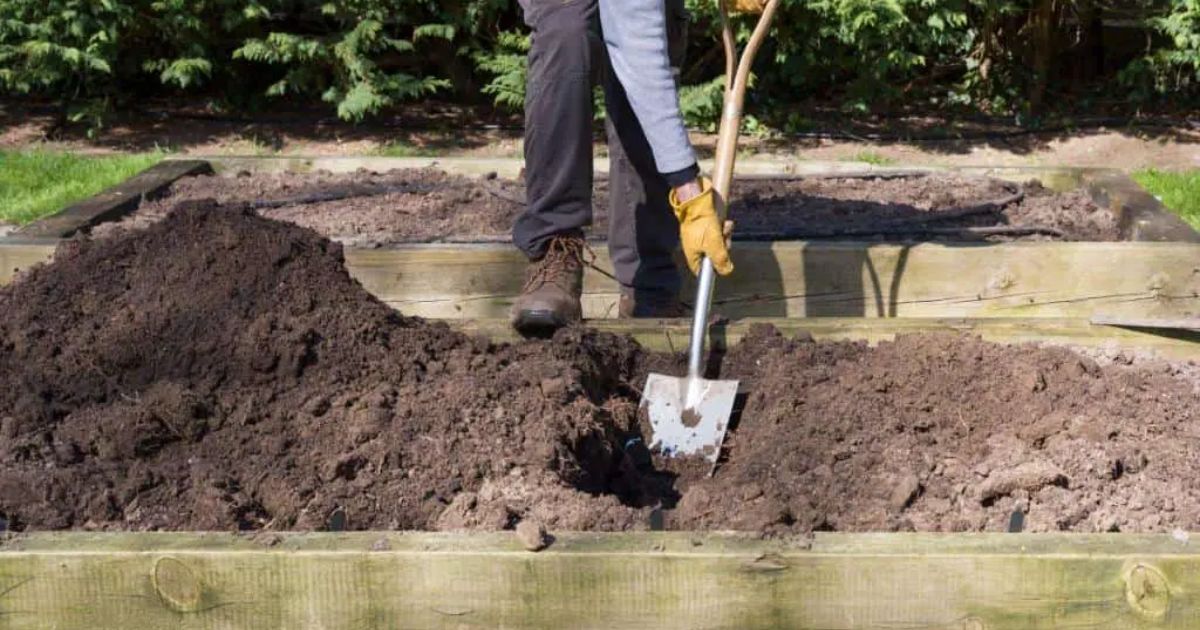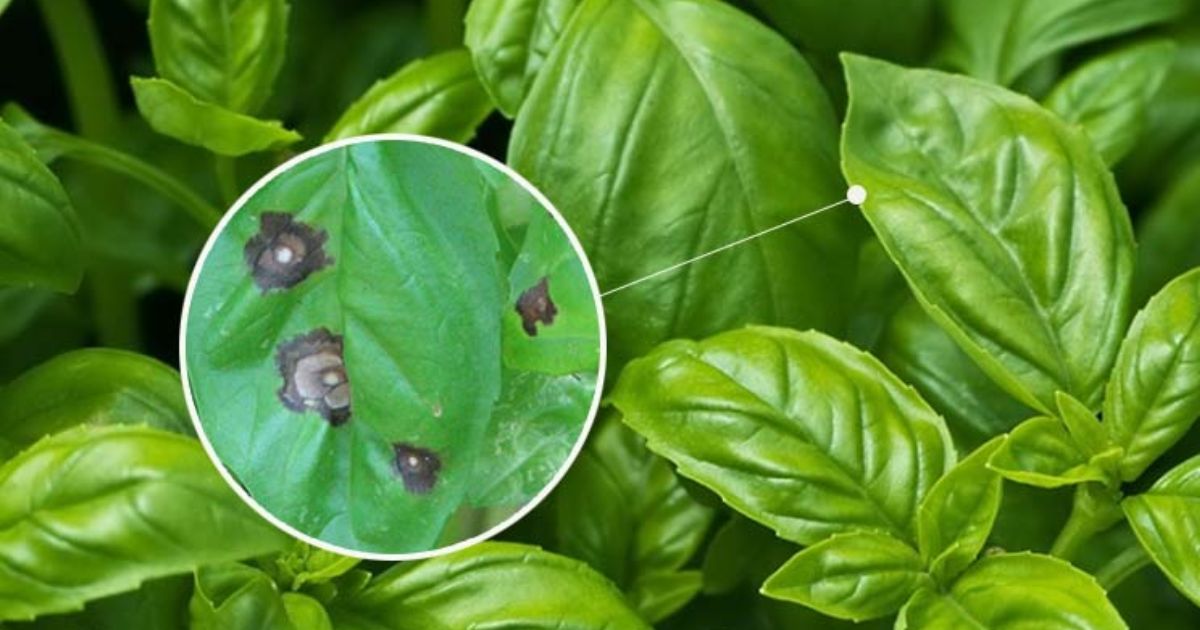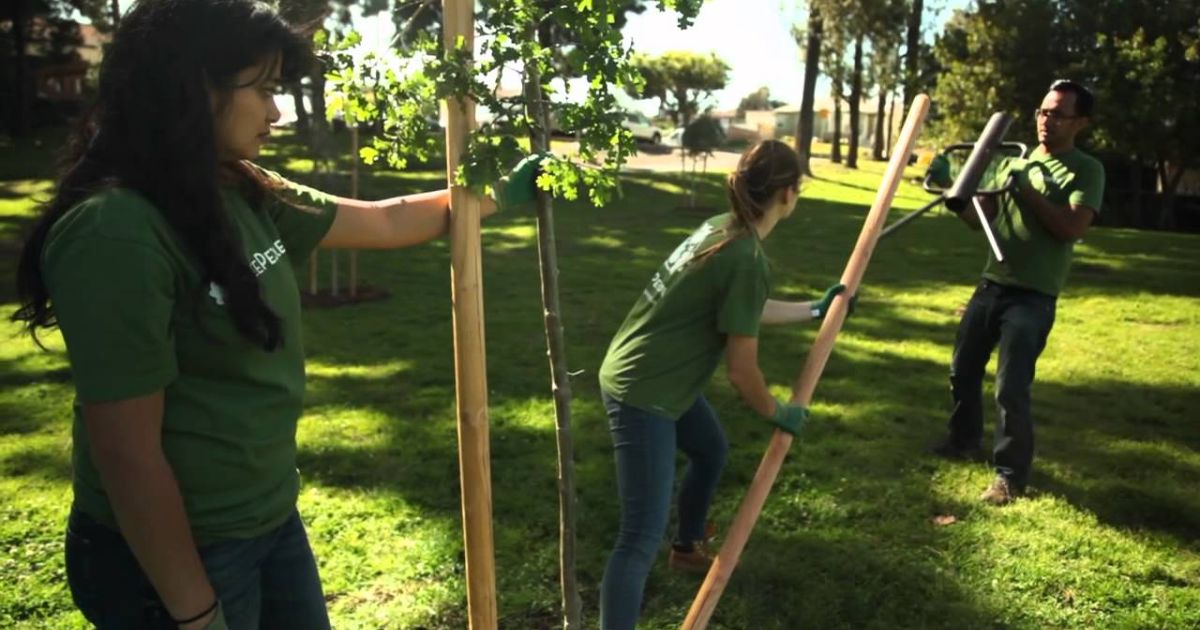Peace lilies (Spathiphyllum) are one of the most popular houseplants. They are loved for their elegant white blooms and lush green leaves. They an outstanding option for both novice and seasoned plant owners.In addition to being beautiful, peace lilies have many other advantages. Their ability to eliminate pollutants like formaldehyde and benzene from indoor air has earned them a reputation for air purification. Additionally, they can flourish in low light levels, which makes them perfect for businesses and homes.
If you want to add a little bit of nature indoors with a low-maintenance plant, a peace lily spathiphyllum plant is a great option. We will go over all you need to know about cultivating and maintaining a robust peace lily in this article.
Choosing the Right Peace Lily
When selecting a peace flower, choosing the right variety and ensuring the plant is healthy is essential. Peace lilies come in different sizes and types, each with unique features. Some common varieties include:
- Spathiphyllum’ Mauna Loa’ – A classic variety with large, glossy leaves and elegant white flowers.
- Spathiphyllum ‘Sensation’ – The largest peace lily, growing up to 4-5 feet tall, perfect for spacious indoor areas.
- Spathiphyllum ‘Domino’ – A unique variegated variety with speckled green and white leaves, adding extra visual interest.
- Spathiphyllum ‘Petite’ – A compact, smaller array, ideal for desks and small spaces.
How to Select a Healthy Peace Lily
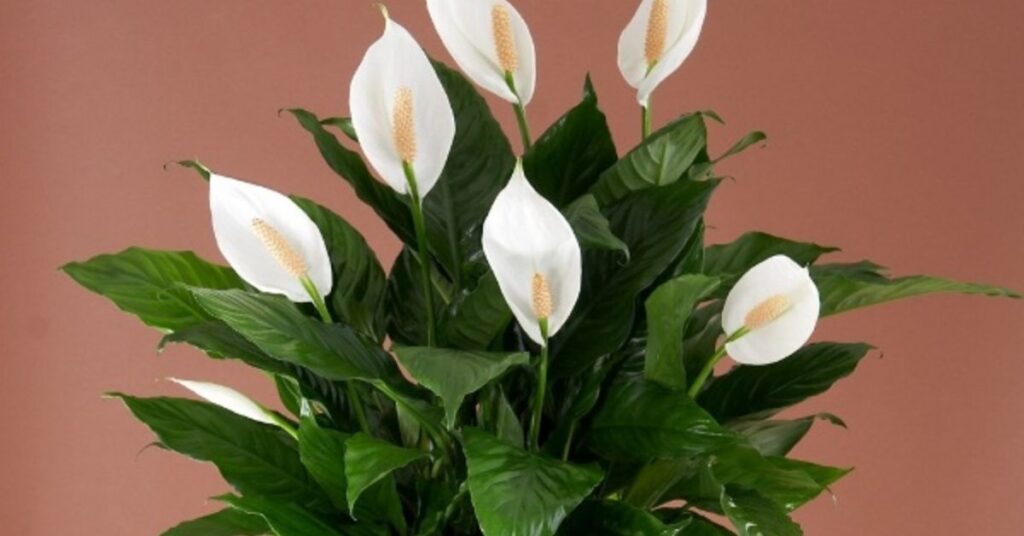
When buying a peace lily, look for:
- Vibrant, deep green leaves – Avoid plants with yellowing or brown edges.
- Strong stems: Weak or drooping leaves may indicate poor health.
- No signs of pests: Check for tiny bugs, webbing, The No-Brainer Guide to Starting Seeds Indoors or sticky residue on the leaves.
- Healthy roots: Inspect the roots to ensure they are white and firm, not mushy or overcrowded.
Choosing a healthy, well-cared-for peace lily will give you a great start to growing a beautiful and thriving plant.
Ideal Growing Conditions for a Peace Lily
Peace lilies care for spathiphyllum are known for adaptability, but providing the right environment will help them thrive. These tropical plants flourish in warm, humid conditions with indirect light. Here’s what you need to know about their ideal growing conditions:
Light Requirements
Although they can withstand low light levels, spathiphyllum prefer bright, indirect light. Their leaves may become scorched by too direct sunshine, although too include:
- Near an east- or north-facing window for gentle sunlight.
- A few feet away from a south- or west-facing window, with sheer curtains to diffuse direct rays.
- Growth may slow in offices or low-light rooms, and blooming may be less frequent.
Temperature and Humidity Needs
peace liky care prefer warm weather and moderate to high humidity because they are indigenous to tropical areas. Remember these requirements:
- 18 to 27°C (65 to 80°F) is the ideal temperature range. Avoid placing them next to heating vents, air conditioners, or chilly gusts.
- Humidity levels: Peace lilies enjoy 60% humidity or higher. What Are Basil Black Spots If your home is dry, you can:
- Mist the leaves occasionally.
- Use a humidity tray (a shallow dish with pebbles and water).
- Place the plant near a humidifier.
Air Circulation
While peace lilies don’t need strong airflow, they benefit from fresh air. Ensure the plant is well-ventilated but away from direct airflow from fans or vents, which can dry out the leaves.
By providing the right balance of light, warmth, and humidity, your peace lily will grow healthy, lush, and vibrant.
Planting and Potting Your Peace Lily
Proper planting and potting are essential for a healthy and thriving peace lily. Choosing the right soil, pot, and drainage system will ensure your plant grows strong and beautiful.
Choosing the Right Soil
Peace lilies prefer light, well-draining soil that retains moisture without becoming soggy. The best soil mix includes:
- Peat-based potting mix – Helps retain moisture while allowing airflow.
- Perlite or sand – Improves drainage and prevents root rot.
- Compost or organic matter – Provides nutrients for healthy growth.
Avoid heavy garden soil, which can compact too much and suffocate the roots. A standard indoor potting mix with added perlite or orchid bark works well.
Selecting the Best Pot
The right pot is just as important as the soil. When choosing a pot:
- Size matters – Pick a pot 1–2 inches larger than the plant’s root ball. A pot that is too big retains excess moisture, leading to root rot.
- Material choices: Terracotta pots allow moisture to evaporate faster, while plastic and ceramic pots retain more moisture.
- Drainage holes are a must – Without proper drainage, excess water can accumulate, causing the roots to rot.
How to Pot a Peace Lily
- Prepare the pot – Ensure it has drainage holes and cover with perlite or tiny stones. at the bottom to enhance drainage.
- Fill with soil – Add a layer of the prepared potting mix.
- Place the plant: Gently remove the piece of lily from its original container, tomatoes splitting loosen the roots slightly, and position it in the new pot.
- Fill in the gaps – To secure the plant, carefully press extra earth around the roots.
- Water thoroughly – After planting, water the peace lily until moisture drains from the bottom.
Repotting Tips
japanese lily plant usually need repotting every 1–2 years or when the roots outgrow the pot. Signs that it’s time to report include:
- Roots growing out of the drainage holes.
- Slow growth or frequent wilting.
- Water drains too quickly, indicating compacted roots.
Your peace lily will establish strong roots and thrive for years with the right soil and pot.
Caring for a Peace Lily Plant
care of peace lily are low-maintenance plants that need proper care to stay healthy and beautiful. Here’s everything you need to know about watering, fertilizing, pruning, and keeping your peace lily thriving.
Watering Your Peace, Lily
lilac peace lily are sensitive to overwatering and underwatering, so finding the right balance is key.
How Often to Water
- Once the top 1-2 inches of soil feel dry, water.
- Generally, this means watering once weekly, What is perlite but frequency may vary depending on temperature and humidity.
- If the leaves start drooping, it’s a sign the plant needs water.
Best Water to Use
- Use filtered, distilled, or rainwater to avoid chlorine and fluoride, which can harm the plant.
- If using tap water, let it sit out for 24 hours before watering.
Preventing Overwatering
- Always use a pot with drainage holes.
- Empty the saucer after watering to prevent standing water.
- If leaves turn yellow or feel soft, reduce watering.
Fertilizing for Healthy Growth
peace lily purple don’t need heavy feeding, but occasional fertilizing helps maintain lush leaves and blooms.
- Use a balanced liquid houseplant fertilizer (20-20-20) diluted to half strength.
- In the spring and summer, give the plant one feeding per month.
- Reduce or stop fertilizing in fall and winter when growth slows.
- Over-fertilizing can cause brown leaf tips, so apply sparingly.
Pruning and Maintenance
Pruning keeps your peace lily looking fresh and encourages new growth.
- Remove dead leaves by cutting them at the base with clean scissors.
- Trim spent flowers once they start turning brown to direct energy to new blooms.
- Wipe leaves with a damp cloth to remove dust and keep them shiny.
Providing Proper Humidity
care of peace lily are tropical plants, Top Tips for Winter Vegetable they prefer higher humidity. To maintain ideal moisture levels:
- Mist the leaves lightly a few times a week.
- Place the plant near a humidifier or use a humidity tray.
- Keep them away from heaters, air conditioners, or dry air vents.
Keeping Your Peace, Lily Healthy
- Rotate the pot every few weeks for even growth.
- Avert abrupt temperature swings and cold draft exposure.
- If necessary, wipe leaves with neem oil and keep an eye out for pests such as mealybugs, aphids, and spider mites.
growing peace lily will flourish with the right care, rewarding you with gorgeous white blooms and vivid green leaves.
How to propagate peace lily plant
To propagate a Peace Lily, gently Take Shake off any excess dirt after removing the plant from the pot. Search for natural clumps or sections with their roots. Divide the plant into these sections using a clean knife or your hands. Make sure each division has a few leaves and a sound root system. Replant each division in a pot with soil that drains well, give it plenty of water, and store it in a warm, shady location. While it settles, keep it out of direct sunshine. Maintain a little moisture in the soil, and after a few weeks, japanese lily plant fresh growth will appear, signaling successful propagation.
How to Make a Peace Lily Bloom
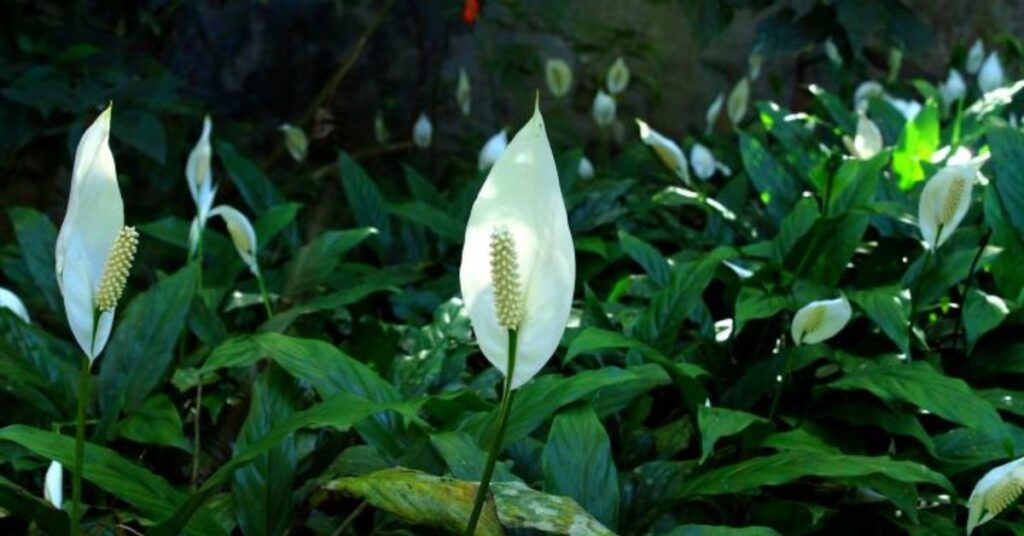
peace liky care are known for their elegant white flowers, but sometimes they refuse to bloom. If your peace lily is only producing leaves without flowers, don’t worry—you can encourage blooming with the proper care and conditions.
Use the Right Fertilizer
Feeding your peace lily with the right fertilizer encourages blooming.
- Use a balanced liquid fertilizer (20-20-20) monthly during spring and summer.
- For better results, choose a fertilizer high in phosphorus (10-30-10) to promote flowering.
- Avoid over-fertilizing, as this can cause excess leaf growth instead of blooms.
Maintain Proper Watering and Humidity
- Water your peace lily when the top 1–2 inches of soil feel dry.
- Use filtered or distilled water to avoid chemical buildup that can harm the plant.
- Maintain humidity levels above 50% by misting the leaves, using a humidity tray, or placing a humidifier nearby.
Peace lilies bloom best in warm temperatures.
- Keep them at 65–80°F (18–27°C).
- Avoid placing them near cold drafts, 10 Common Seed Starting Mistakes air conditioners, or heating vents.
Repot if Necessary
If your peace lily is root-bound, it may struggle to bloom. Check the roots:
- If they circle the pot, repot it into a slightly larger container with fresh soil.
- Use a potting mix that drains well and contains compost, peat, and perlite.
Prune Old Flowers and Leaves
- Trim off any spent flowers or yellow leaves to encourage new growth.
- Cut the flower stalk at the base after the bloom fades.
Mimic Natural Growth Cycles
Peace lilies need a slight dry period to trigger blooming. Try this trick:
- Reduce watering slightly for 1–2 weeks to mimic dry seasons.
- Then resume regular watering and fertilizing—this often stimulates flowers.
How Long Does It Take for a Peace Lily to Bloom?
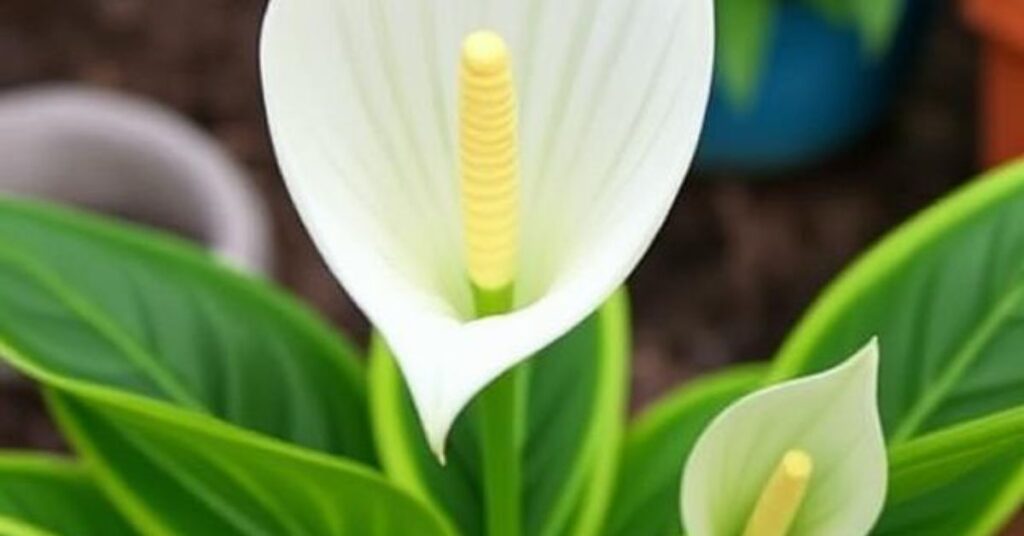
If your care of the care for spathiphyllum is healthy and growing in the right conditions, it should bloom within 2–3 months. However, some plants take longer, How to Care for Orchids especially if recently repotted or moved to a new location.Following these steps, you can encourage yourpeace lily spathiphyllum to produce beautiful white flowers and enjoy its full beauty year-round!
Watering, underwatering, or old age. Solution:
- Check the soil—if it’s soggy, let it dry prior to rewatering.
- Water the plant thoroughly and modify your watering schedule if the soil is very dry.
- Trim off old yellow leaves to encourage new growth.
Brown Leaf Tips
- Cause: Low humidity, chlorine in tap water, or over-fertilization.
Solution:
- Use a humidifier or spritz the leaves to increase the humidity.
- Use distilled, filtered, or rainwater instead of tap water.
- Cut back on fertilizer and use a diluted liquid fertilizer once a month.
Drooping Leaves
Cause: Underwatering, overwatering, or sudden temperature changes.
Solution:
- If the soil is dry, water your plant thoroughly.
- If the soil is too wet, allow it to dry before watering again.
- Keep the plant away from cold drafts or direct heat sources.
No Blooms
Cause: Low light, lack of nutrients, or an oversized pot.
Solution:
- Move the plant to a spot with bright, indirect light.
- Use a phosphorus-rich fertilizer (like 10-30-10) once a month.
- If the pot is too big, repot it into a slightly smaller container to encourage blooming.
Root Rot
Cause: Overwatering or poor drainage.
Solution:
- Remove the plant from the pot and trim any black, mushy roots.
- Repot using fresh, well-draining soil and a pot with drainage holes.
- Water only when the top 1–2 inches of soil feel dry.
Pests (Spider Mites, Aphids, Mealybugs)
Cause: Dry conditions or infected nearby plants.
Solution:
- Wipe leaves with a damp cloth and use neem oil or insecticidal soap.
- Keep the plant’s humidity levels high to deter pests.
- Isolate the affected plant to prevent spreading.
Leaves Turning Black
Cause: Extreme cold, chemical exposure, or severe overwatering.
Solution:
- Keep the plant warm and stable (65–80°F).
- Avoid contact with household cleaners or cold drafts.
- Check the roots—if they are rotten, trim damaged parts and report.
You can maintain the health and vibrancy of your peace lily for many years to come by recognizing and taking care of these problems early on!
Why Is My Lily Dying?
Several factors could be at play if your lily looks sad or dying. One of the most common issues is overwatering—lilies hate sitting in soggy soil, which can lead to root rot. On the flip side, underwatering can dry them out, especially in hot weather or dry indoor conditions. Check the soil moisture regularly to keep it slightly damp but not soaked.Another big culprit is poor lighting. Lilies need bright, indirect light. Too much direct sun can scorchthe leaves, yet little light might damage the plant and prevent it from blooming.
peace flower like aphids, spider mites, or mealybugs can also stress your lily out. Check under the leaves and around the stems for any creepy crawlies. Yellowing leaves or black spots might indicate a fungal or bacterial disease, often caused by poor air circulation or overwatering.Also, don’t ignore the pot size or soil quality. If your lily is root-bound or in old, depleted soil, it may not get the nutrients it needs. Refresh the soil and repot if necessary.
In short, evaluate your watering, light, pests, and soil. With love and attention, your lily can return to life!
Conclusion
Peace lilies are beautiful, low-maintenance plants that thrive with proper care. You can keep your plant healthy and encourage bloom by providing indirect light, adequate watering, high humidity, and occasional fertilizing. Understanding common issues like yellow leaves, drooping, or a lack of flowers will help you quickly fix problems and keep your peace lily vibrant.
With just a little attention and the right growing conditions, your caring for a peace lily plant will reward you with lush green leaves and stunning white blooms, bringing elegance and freshness to your home. Regardless of your level of experience as a plant parent, this tropical beauty makes a wonderful addition to any area.Following these care tips, you’ll enjoy a thriving peace lily for years!
FAQ
1. How often should I water my peace lily?
Water your lilies whitey when the top 1–2 inches of soil feel dry. Generally, this means watering once a week, but Depending on your home’s temperature and humidity levels, the frequency could change. To avoid overwatering, always make sure the pot has adequate drainage.
2. What is preventing the blossoming of my peace lily?
Bright, indirect light is necessary for peace lilies to blossom. If your plant isn’t blooming, it could be in a spot with too little light. Additionally, ensure you use a phosphorus-rich fertilizer to encourage flowering and avoid overwatering.
3. Can I keep my peace lily in low light?
peace lily spathiphyllum plant can tolerate low light conditions but are less likely to bloom. Place them in a spot with indirect sunlight to encourage robust development and blooming for optimal outcomes.
4. How do I know when to report my peace lily?
You’ll know it’s time to repot as soon as the roots emerge from the drainage holes or if the plant is root-bound (slow growth or wilting despite proper care). Repot every 1–2 years or when the plant has outgrown its pot.
5. Why are the tips of my peace lily’s leaves turning brown?
Brown leaf tips are often caused by low humidity, over-fertilizing, or chlorine in tap water. To prevent this, increase humidity by misting the leaves, reducing fertilizer usage, and using filtered or distilled water.

